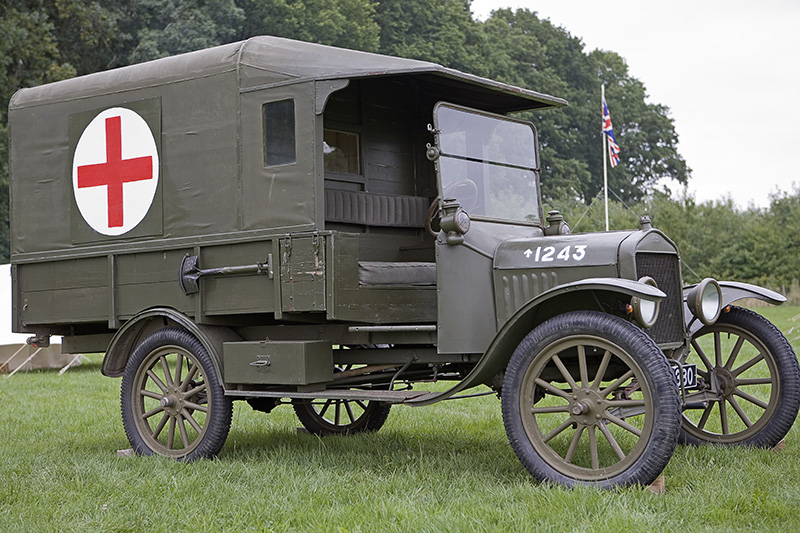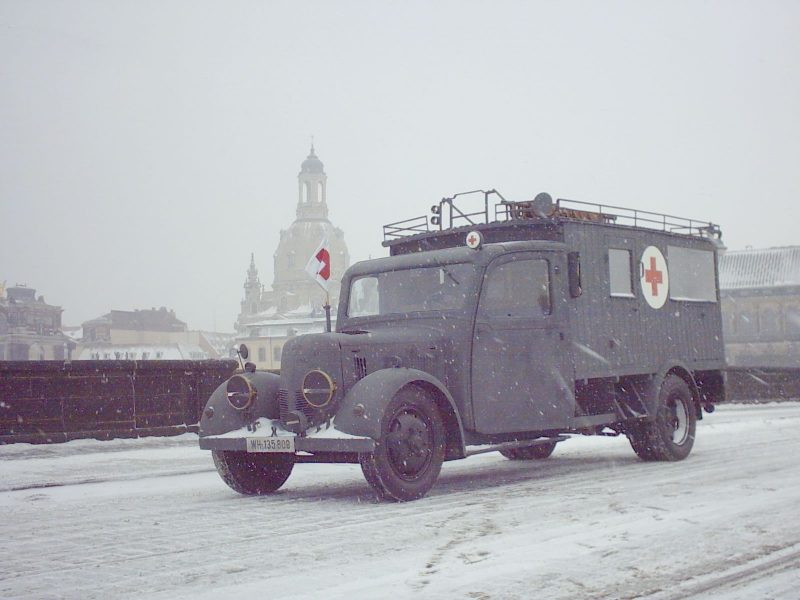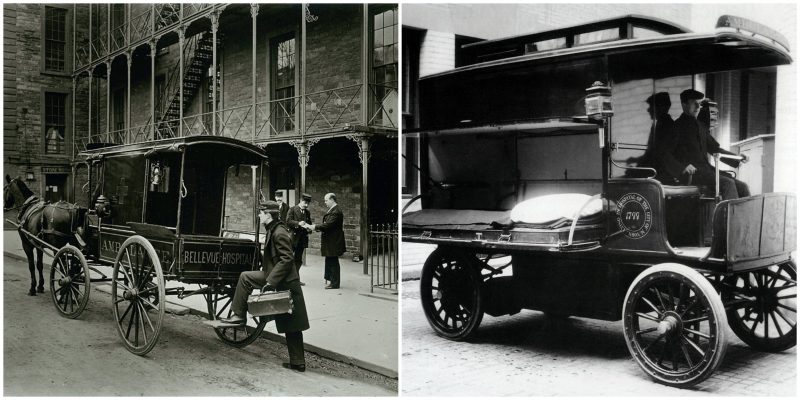The history of the ambulance begins in ancient times, with the use of carts to transport incurable patients by force. Ambulances were first used for emergency transport in 1487 by the Spanish, and civilian variants were put into operation in the 1830s. Advances in automotive technology throughout the 19th and 20th centuries led to the modern self-propelled ambulances.
In civilian ambulances, a major advance was made with the introduction of a transport carriage for cholera patients in London in 1832. The Times newspaper said, “The curative process commences the instant the patient is put in tot he carriage; time is saved which can be given to the care of the patient; the patient may be driven to the hospital so speedily that the hospitals may be less numerous and located at greater distances from each other”.
The United States civil war brought more advances in medical care for the military. Union military physicians Joseph Barnes and Jonathan Letterman designed a prehospital care system for soldiers, which used new techniques and methods of transport. Every regiment possessed, at least, one ambulance cart, with a two-wheeled design that accommodated two or three patients.
These ambulances, unfortunately, proved to be too lightweight for the task and were phased out to be replaced by the “Rucker” ambulance, named for Major General Rucker. This was a four-wheeled cart and was a common sight on the battlefields during the civil war.
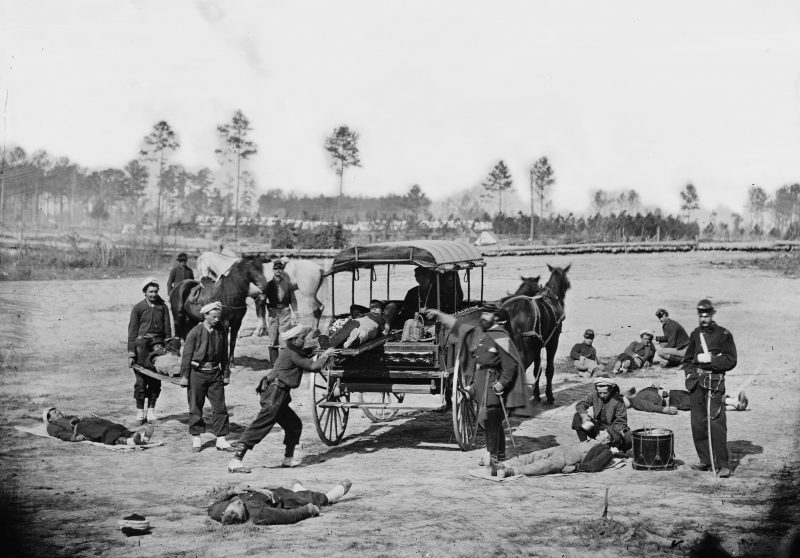
Other vehicles were pressed into service during the civil war, including a number of Steamboats, which served as mobile hospitals for the troops. It was in this period that the practice of transporting wounded soldiers to treatment facilities by the railroad was introduced.
The first known hospital-based ambulance service was based out of Commercial Hospital, Cincinnati, Ohio, (now the Cincinnati General) in 1865. This was soon followed by other services, notably the New York service provided out of Bellevue Hospital. Edward Dalton, a former surgeon in the Union Army, was charged with creating a hospital in lower New York; he started an ambulance service to bring the patients to the hospital faster and in more comfort, a service which started in 1869. These ambulances carried medical equipment, such as splints, a stomach pump, morphine, and brandy, reflecting contemporary medicine.
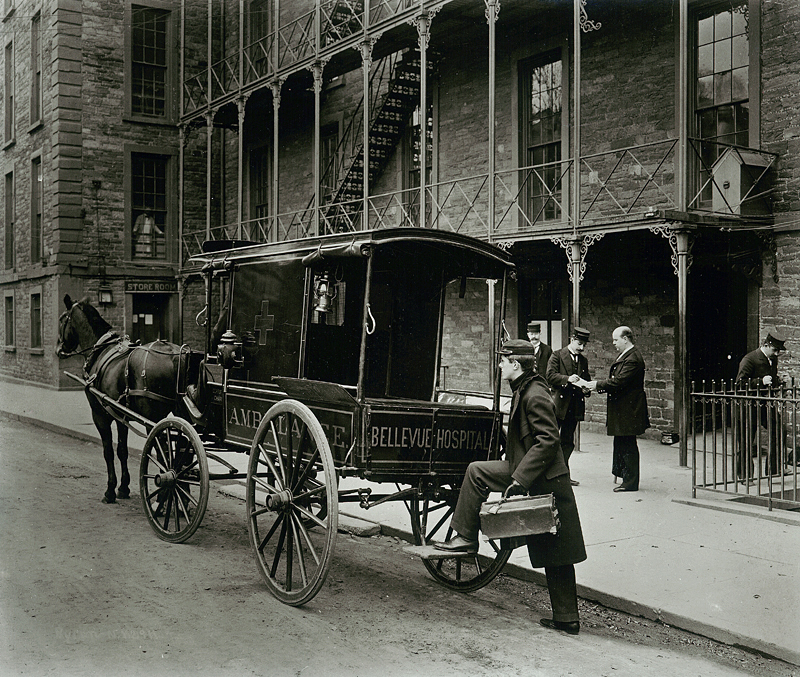
Dalton believed that speed was of the essence, and at first, the horses were kept in harness while awaiting a call: within a few months this practice had been replaced with a ‘drop,’ or ‘snap,’ harness arrangement, whereby the tack was lowered by pulley from the ceiling straight onto the horse: under either scheme, ambulances were ready to go within 30 seconds of being called.
In 1867, the city of London’s Metropolitan Asylums Board, in the United Kingdom, received six horse-drawn ambulances for the purpose of conveying smallpox and fever patients from their homes to a hospital. These ambulances were designed to resemble private carriages but were equipped with rollers in their floors and large rear doors to allow for a patient, lying on a specially designed bed, to be easily loaded. Space was provided for an attendant to ride with the patient, and the entire patient compartment was designed to be easily cleaned and decontaminated.
In the late 19th century, the automobile was being developed. Self-propelled ambulances started to be introduced alongside horse-drawn models; early 20th-century ambulances were powered by steam, gasoline, and electricity. The first motor-powered ambulance was brought into service in the last year of the 19th century. This ambulance belonged to the Michael Reese Hospital in Chicago. It was donated in February 1899 by 500 prominent local businessmen. This was followed in 1900, by New York City, which extolled its virtues of greater speed, more safety for the patient, faster stopping, and a smoother ride. These first two automobile ambulances were electrically powered with 2 horsepower (1.5 kW) motors on the rear axle.
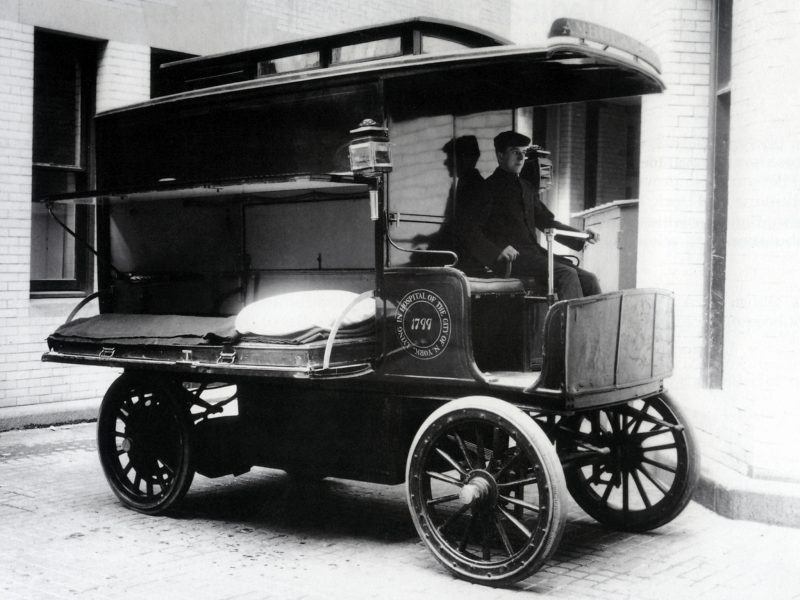
The first mass-production automobile-based ambulance (rather than the previous single models) was produced in the United States in 1909 by the James Cunningham, Son & Company of Rochester, New York, a manufacturer of carriages and hearses. This ambulance named the Model 774 Automobile Ambulance, featured a 32 horsepower (24 kW), 4-cylinder internal combustion engine. The chassis rode on pneumatic tires while the body featured electric lights, a suspended cot with two attendant seats, and a side-mounted gong.
